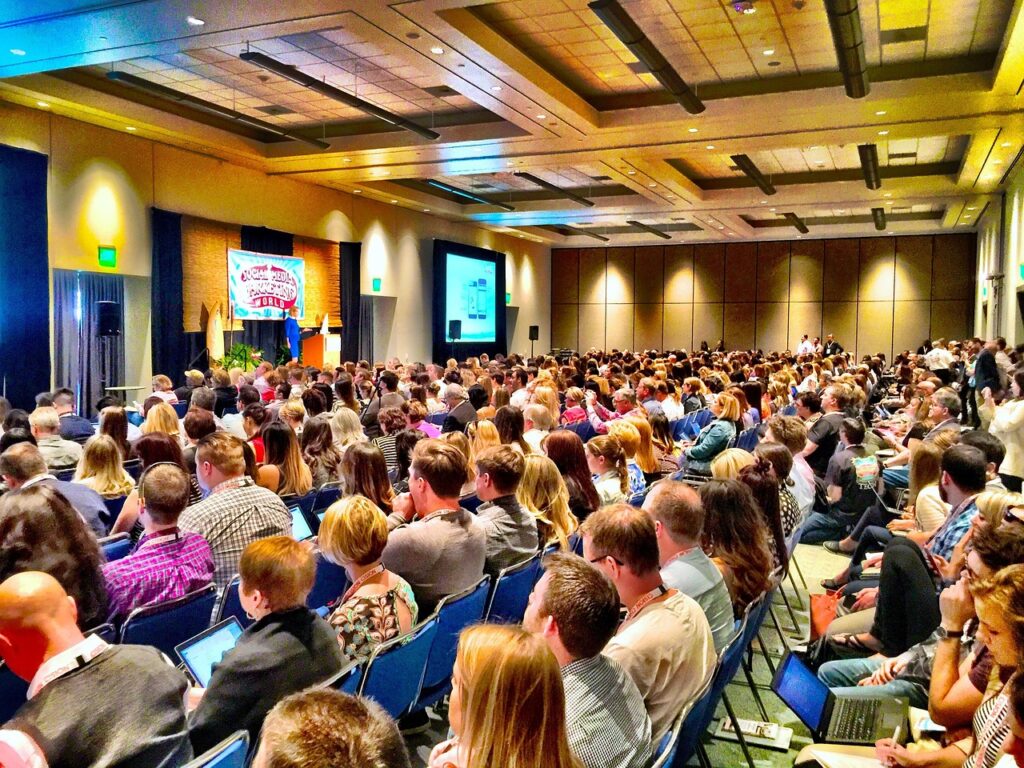The Credibility Factor: Why External Voices (Keynote Speakers) Resonate More Than Internal Ones
The Power of Perspective: Understanding the Value of External Keynote Speakers
When organisations gather teams for conferences, summits, or annual meetings, the choice of who delivers the keynote address carries significant weight. While internal leaders and subject matter experts possess invaluable knowledge, there is a growing trend towards inviting external keynote speakers—individuals unconnected with the company day-to-day—to headline major events. This shift is not simply fashionable; it is rooted in the unique credibility and resonance that external voices bring to the table.
Breaking the Echo Chamber: The Need for Fresh Perspectives
Internal speakers, no matter how inspiring, are often bound by the organisation’s established culture, jargon, and worldview. Teams hear from them regularly, and their messages, while important, can sometimes blend into the background noise of everyday communications. Enter the external keynote speaker—a fresh perspective, unencumbered by internal politics or history. Their very outsider status allows them to challenge assumptions, introduce new frameworks, and offer insights that might otherwise be overlooked or dismissed.
This injection of new ideas can be invigorating for employees who may feel stuck in a routine or weary of hearing the same voices. By breaking the echo chamber, external speakers can spark innovation and offer a jolt of energy that internal voices, however earnest, may struggle to provide.
The Weight of Authority: Why External Voices Command Attention
Credibility is often associated with authority and expertise. External keynote speakers are typically chosen for their accomplishments, reputation, or unique insights in a particular field. Their expertise is validated by experiences and achievements outside the organisation, making their words carry extra weight. When a well-regarded thought leader, author, or industry disruptor takes the stage, audiences are more likely to pay attention, take notes, and reflect on the message.
This phenomenon is not unique to the corporate world. Consider the effect of a guest lecturer at a university, or a visiting chef at a renowned restaurant. Outsiders often bring a level of gravitas that those within the institution, despite their qualifications, can struggle to match. Their unfamiliarity is a strength—it commands attention and respect.
Reducing Bias: The Perception of Objectivity
Employees are sometimes sceptical of internal messaging, viewing it as self-serving or overly aligned with leadership’s agenda. External speakers, by contrast, are perceived as more objective. They have no stake in internal politics, and their advice is less likely to be coloured by organisational priorities or biases. This perceived impartiality allows them to deliver hard truths, challenge entrenched thinking, and advocate for change in ways that internal leaders may find difficult.
The effect is similar to bringing in a neutral consultant to resolve a dispute or audit a process. The external perspective is trusted because it is seen as independent, and therefore more credible. For organisations seeking to drive transformation or address sensitive topics, this credibility can make all the difference.
Storytelling and Relatability: The Magic of the Outsider’s Tale
A keynote speaker’s ability to connect with an audience often hinges on the stories they tell. External speakers, drawing from a different set of experiences, can offer anecdotes and case studies that feel novel and relatable. Their stories are fresh, their challenges are different, and their triumphs are inspiring precisely because they are not part of the organisation’s daily narrative.
Moreover, external speakers can tailor their message to the event’s theme, weaving in universal truths and lessons learned from diverse industries or backgrounds. This storytelling magic makes their talks memorable, maximising the chance that key messages will be retained long after the event concludes.
Motivation and Morale: The Ripple Effect of an External Voice
There is something uniquely motivating about hearing from someone who has achieved remarkable things outside the walls of one’s own organisation. External keynote speakers often serve as role models—living proof that success is possible, that adversity can be overcome, and that innovation is within reach. Their journeys can inspire teams to reach higher, adapt to change, and embrace new challenges with enthusiasm.
For employees who may feel disconnected or uninspired, the presence of a celebrated outsider can reignite a sense of purpose and excitement. This boost to morale often translates into higher engagement and productivity in the weeks and months following the event.
Facilitating Change: The Catalyst Effect
Organisations often struggle to implement change, particularly when resistance stems from within. Internal leaders advocating for transformation may be met with scepticism, especially if change is perceived as self-serving or threatening. External speakers, unburdened by organisational baggage, can act as catalysts for change. Their endorsement of new strategies or mindsets can tip the scales, making it easier for employees to buy in and for leaders to move forward.
In this sense, the external keynote speaker is akin to a trusted referee, able to validate new approaches and reinforce the need for change. Their influence can help overcome inertia, aligning teams around a common goal.
Expanding Networks: The Value of External Connections
Bringing in a keynote speaker from outside the organisation is also an opportunity to expand professional networks. External speakers often come with their own connections, opening doors for future collaborations, partnerships, or mentoring opportunities. Their presence can inspire employees to think beyond the boundaries of their current roles, encouraging them to connect with peers in other industries and broaden their horizons.
This cross-pollination of ideas and relationships is invaluable in an increasingly interconnected business world. It helps organisations stay agile, innovative, and competitive.
Overcoming the Internal Credibility Gap
Even the most respected internal leaders can face a credibility gap when delivering challenging messages. Familiarity can breed complacency, and employees may tune out communications from those they see every day. Furthermore, internal speakers may inadvertently reinforce existing hierarchies or biases, making it difficult to foster genuine dialogue or change.
External speakers can bridge this gap, offering a fresh voice untainted by internal dynamics. Their authority is derived from their expertise and achievements, not their position within the company. As such, they can often say things that internal leaders cannot, making them powerful agents for growth and transformation.
When Internal Voices Still Matter
This is not to say that internal voices are unimportant. On the contrary, leaders and subject matter experts within the organisation play a crucial role in shaping culture, strategy, and vision. The key is to strike a balance—leveraging the credibility and impact of external keynote speakers for major events, while empowering internal voices to reinforce and embed key messages over time.
Ideally, external and internal speakers work in tandem. The external keynote sets the tone, introduces new ideas, and inspires. Internal leaders then take up the baton, contextualising the message for their teams and driving sustained action.
Choosing the Right External Keynote Speaker
Not all external speakers are created equal. To maximise the credibility factor, organisations should carefully select keynote speakers whose expertise, values, and style align with event objectives. Factors to consider include:
- Relevance: Does the speaker’s background and message resonate with the audience?
- Credibility: Is the speaker recognised as an authority in their field?
- Storytelling Ability: Can they engage and inspire through authentic stories and examples?
- Objectivity: Are they perceived as impartial and independent?
- Track Record: Have they driven real change or achieved notable successes?
A well-chosen external keynote speaker can elevate an event, galvanise teams, and create lasting impact.
Practical Tips for Leveraging External Voices
- Introduce the speaker with context, highlighting their achievements and relevance to the audience.
- Encourage interaction—Q&A sessions, workshops, or panel discussions help embed the message.
- Follow up with internal communications that reinforce and contextualise the keynote’s key points.
- Gather feedback to assess impact and inform future speaker selections.
Conclusion: The Lasting Impact of Credible External Voices
In a world awash with information, credibility is king. External keynote speakers offer a unique combination of authority, objectivity, and inspiration that internal voices, however talented, often struggle to match. By stepping outside the organisation’s echo chamber, bringing in new perspectives, and validating the need for change, external speakers can help organisations move forward with renewed confidence and clarity.
The credibility factor is not just a buzzword—it is a tangible force that can determine the success of your next big event. Harness it wisely, and watch your teams respond with engagement, enthusiasm, and a willingness to embrace the future.









